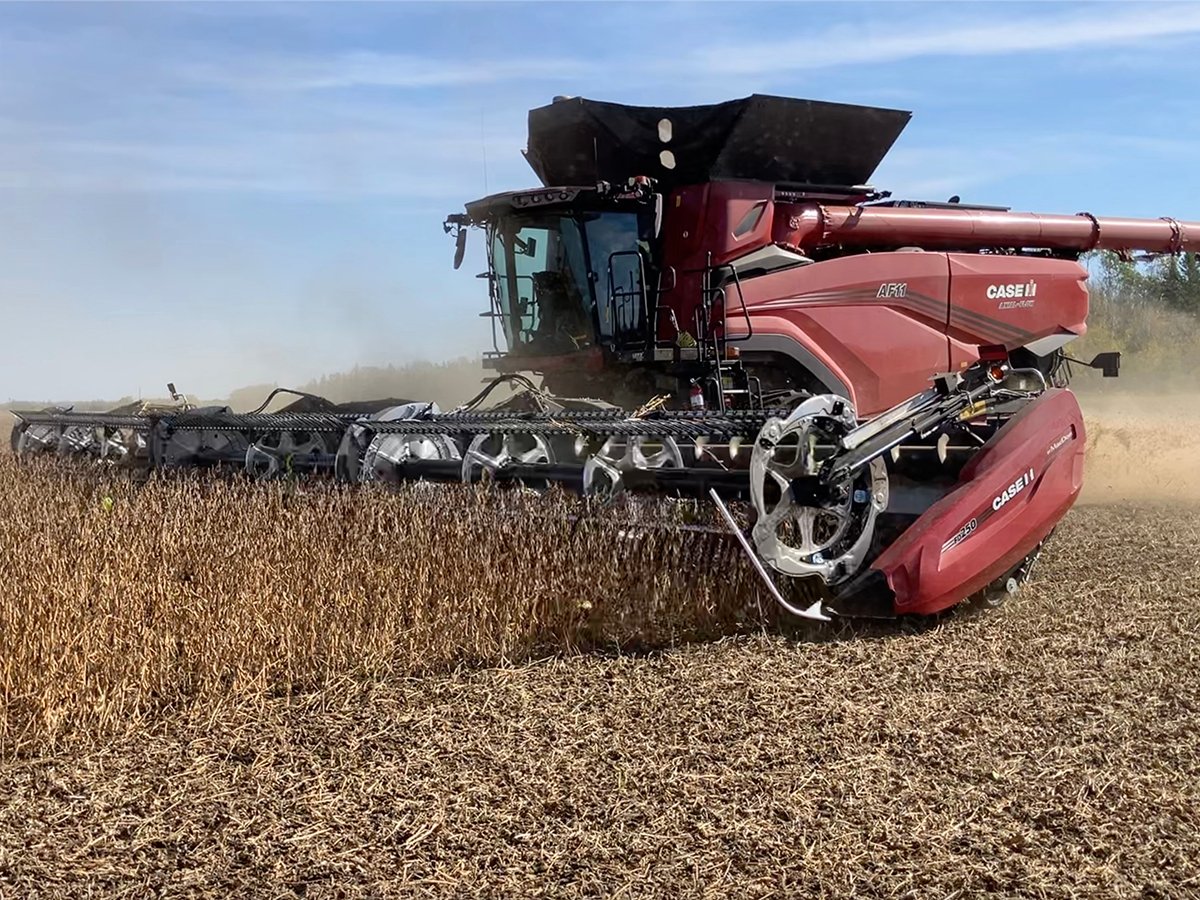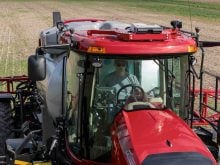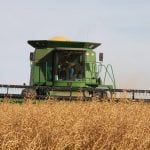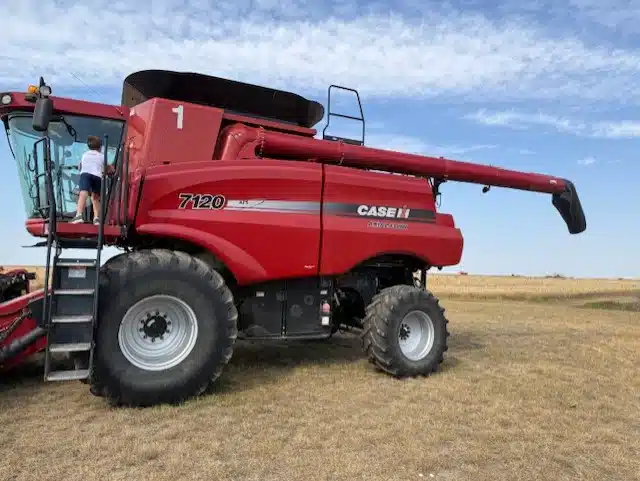Glacier FarmMedia – Last February Case IH pulled the wraps off the largest, highest capacity combine it has ever developed — the AF11.
To get that capacity, the brand opted for another first — to make it the only twin rotor machine to ever wear red paint.
Of course, sister brand New Holland has been building twin rotor combines for decades. Until now, though, that engineering concept hadn’t migrated across to Case IH brand models. The CR11 is New Holland’s companion model to the AF11.
“We see this machine as a way to drive capacity, bring state of the art technology and bottom-line benefits for our customers,” Leo Bose, Case IH’s harvesting segment leader, said when the AF11 release was announced.
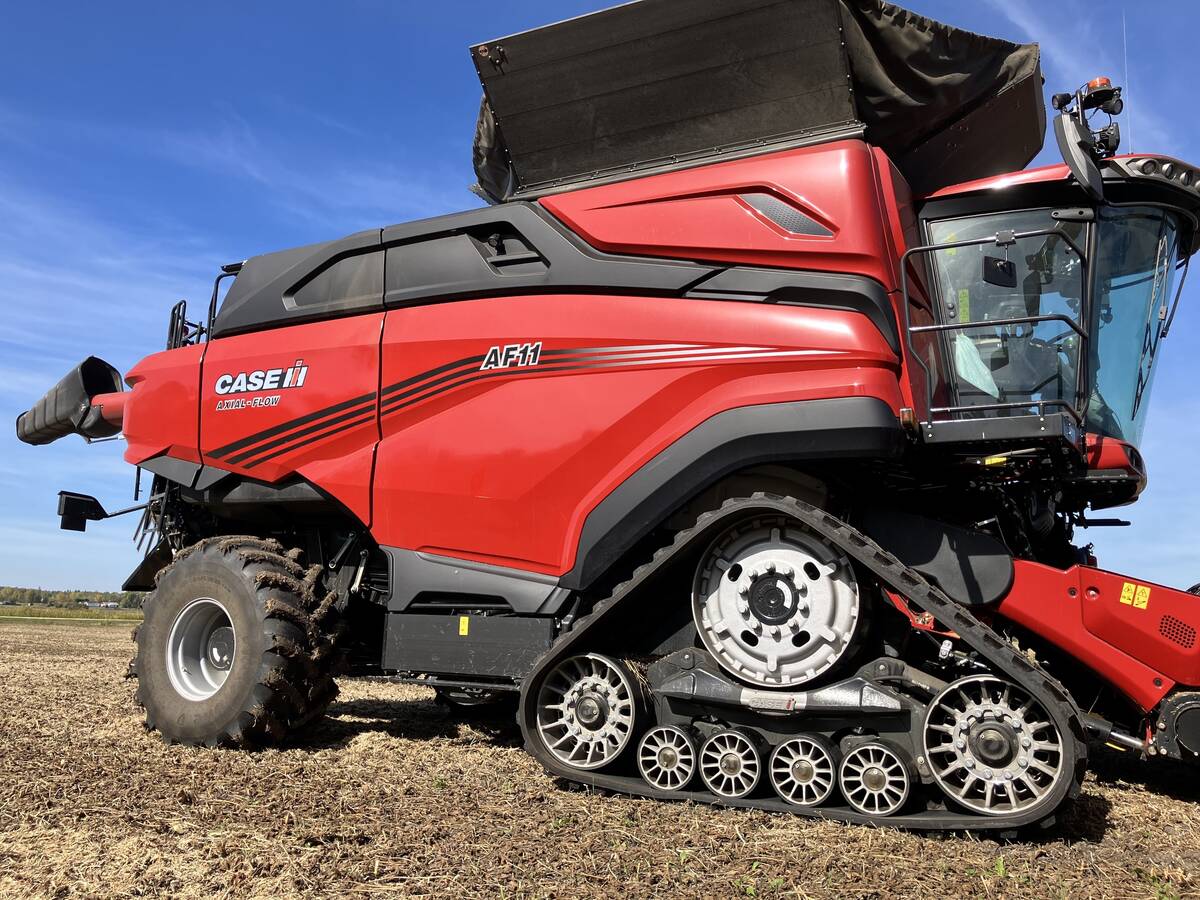
So to find out if the AF11 lives up to that promise, this fall as the first one to arrive in Manitoba was nearing the end of its initial harvest season, we went out to see it at work, talk to a Case IH harvesting product specialist, the dealer that sold the machine, and — most importantly — the customer who bought it.
Read Also
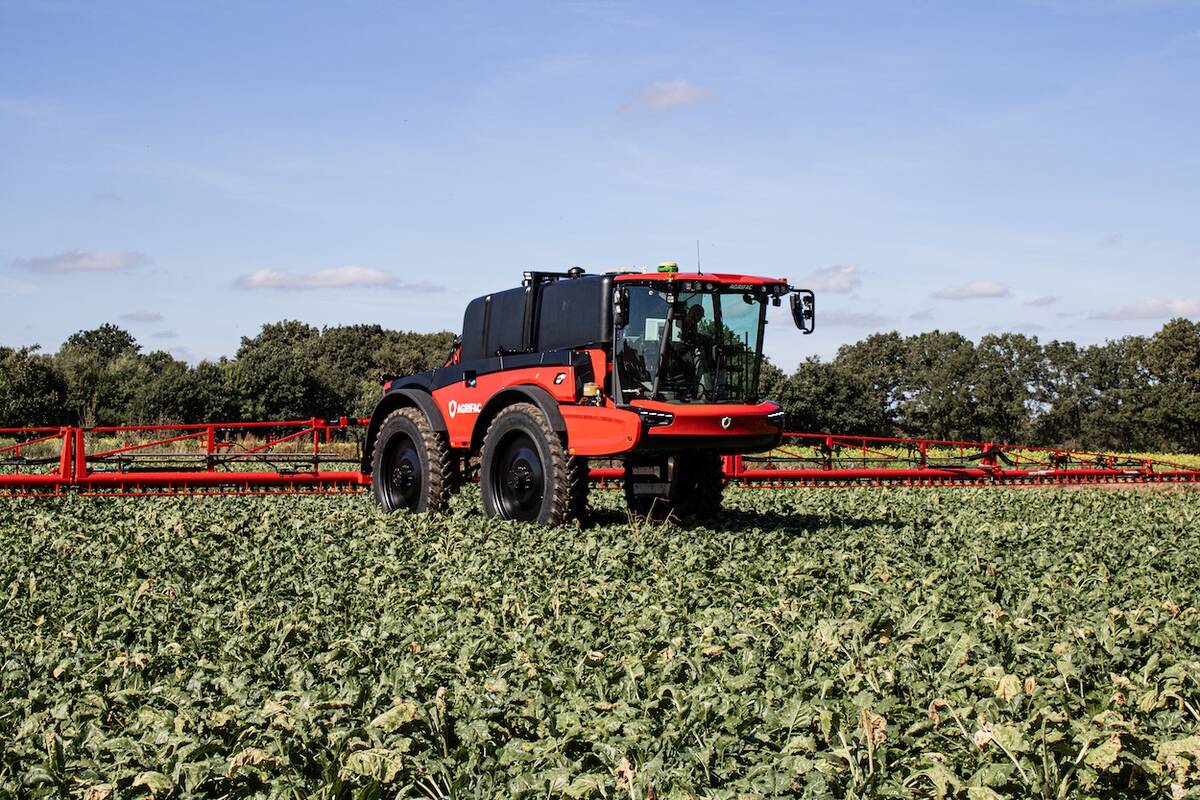
Agrifac launches ‘new generation’ of sprayers
Agrifac recently announced a “new generation” of self-propelled sprayers, consisting of three models: the Vanguard 55, Vanguard 67 and Endurance 80.
The AF11 has 710 stabled horses behind the grain hopper to power it — the engine rating gets boosted to 775 when power demand grows. That muscle comes from a 16-litre FPT Cursor diesel engine.
A promise of more horsepower was the key buying consideration for members of the Greenwald Colony near Beausejour, Man., which pre-ordered an AF11.
“We were really running low on horsepower,” says Rick Hofer, the colony’s farm manager, referring to the performance of the two 9250 Combines it was using.
“We have some pretty heavy crops … and we were slowing down to one, one and half m.p.j. in heavy straw. We needed the extra horsepower.”
To see if they got what they expected after taking delivery of their AF11, Hofer says they performed side-by-side tests with their existing 9250s. The difference, he says, was significant. When running the machines in 94 bushel-per-acre barley, the AF11 was deliberately pushed to capacity.
“We went over 5.5 m.p.h. with the 50-foot header.”
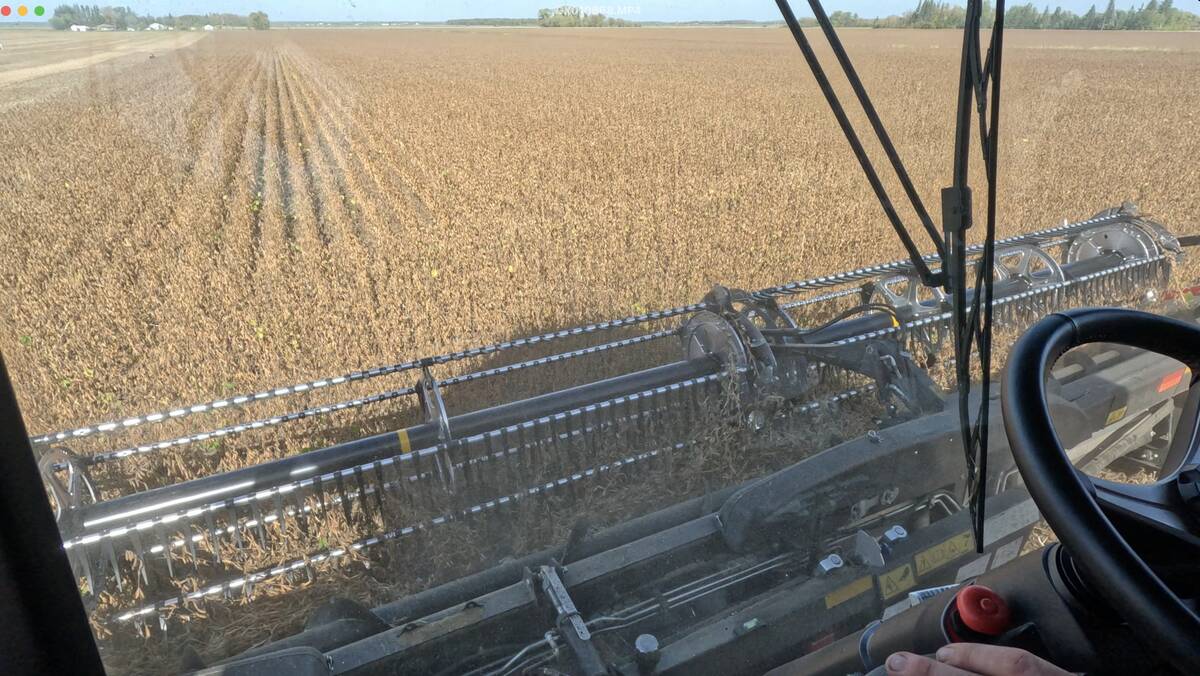
Some of the crop was down, so the AF11’s overall speed was limited by the header’s ability to pick it up, with the combine monitor reading only 95 per cent power use despite the quick pace.
“It could probably even do more,” he adds, if the crop had been standing properly.
Pushing any combine to its maximum capacity usually means accepting higher loss rates, but the AF11 still performed well. Using a drop pan, Hofer measured the test loss rate at slightly less than a half bu. per acre.
The Cursor engine managed to power that performance at a lower per-acre fuel consumption rate than the older machines.
“We figure we could do 35 to 50 per cent more (acres) per day, compared to the 9250s,” he says.
“On fuel consumption, we figured out we needed 1.7 gallons per acre (for the 9250s) on a heavy crop. With the AF11 we need one gallon per acre. That’s very impressive.”
The colony has logged about 250 hours of threshing on the AF11 so far this season and used it in a variety of crops.
Having a lot of experience running single rotor Case IH combines, Hofer attributes part of the AF11’s higher threshing capacity to the twin rotor concept.
Justin Waldner, Case IH’s harvesting products specialist, agrees with that assessment.
“Case IH has been in the rotary combine business for 45 years,” he says.
“To increase capacities over and above what a single rotor can do, we needed to adopt the twin rotor technology.”
Waldner says the AF11s have consistently covered 25 to 27 acres per hour in 80 to 90 bu.-per-acre fields.
Hofer confirms their experience has been similar. The combine was running at 22 acres per hour in soybeans during our visit, but the operator had deliberately slowed down due to the high crop moisture conditions, with the monitor showing 85 per cent engine power usage at that pace.
The Greenwald Colony’s machine is matched to a 50-foot straight-cut header, which is a good fit for the AF11. However, a 61-foot MacDon-built version is also available.
The combine’s Harvest Command Automation feature can make continual evaluations of the grain going into the tank, and it will automatically adjust thresher settings through the day as conditions change.
“The operator will designate the crop in his monitor,” Waldner says.
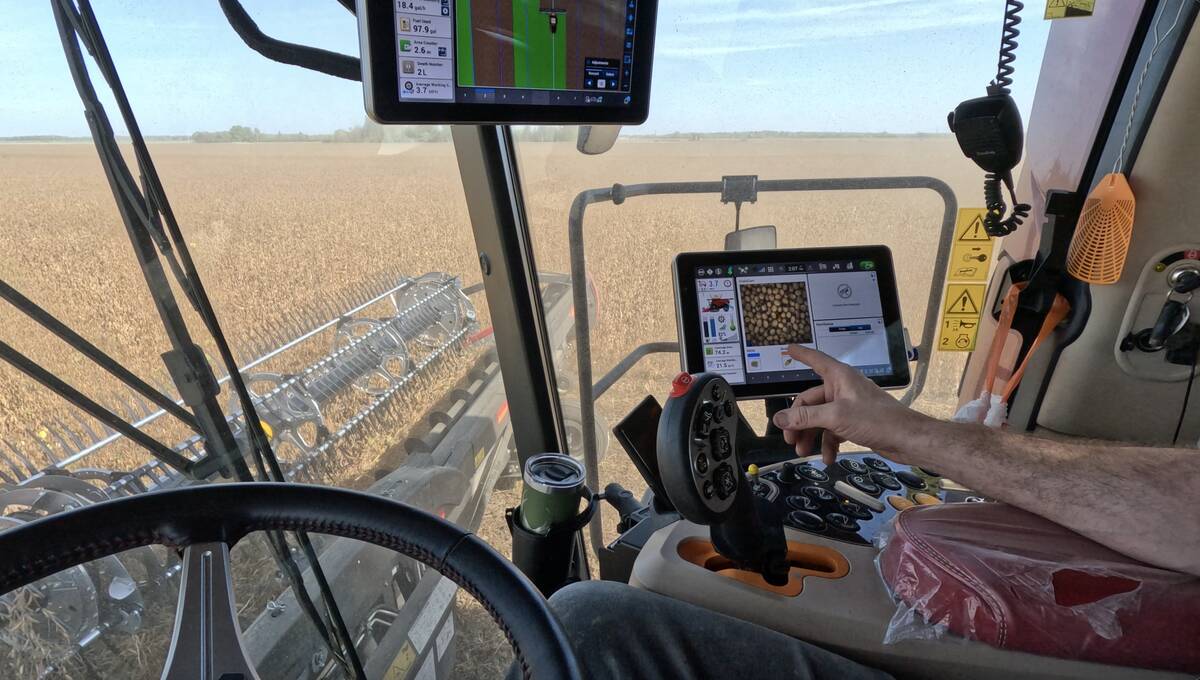
“There’ll be some initial settings the machine will start with. As the crop goes through the machine, the machine itself will make adjustments.”
In the cab, the monitor displays an image of the grain going into the hopper that refreshes about every five seconds. That gives the operator near real-time information, allowing him to fine tune the thresher settings if desired.
The Greenwald Colony’s AF11 was equipped with suspended track modules and rear axle drive.
“That’s a feature that’s new to Case IH for the AF11,” says Waldner.
The efficiency of the rear chopper has impressed the colony’s combine operator, James Hofer, who says it is capable of a pretty even distribution pattern, even adjusting for strong crosswinds.
He says the twin rotors seem to increase the noise level from the threshing mechanism inside the cab, compared to what he was used to with single-rotor machines. However, the in-cab environment is still very comfortable.
Leo’s Sales and Service Case IH dealership in Winnipeg sold the combine to Greenwald Colony, and co-owner Jena Grandmont says there has been a lot of interest from her customers for a combine with this capacity.
“It’s been long awaited. We’ve had customers, probably for the last seven years, interested in more capacity.”
When a demonstration AF11 was brought to Manitoba last year, she says 60 or 70 dealership customers came out to see it.
Rick Hofer says the colony hasn’t had any second thoughts about adding the AF11 to its fleet.
“We’re very happy (with it) so far. It’s a very impressive machine, no two ways about it.”


